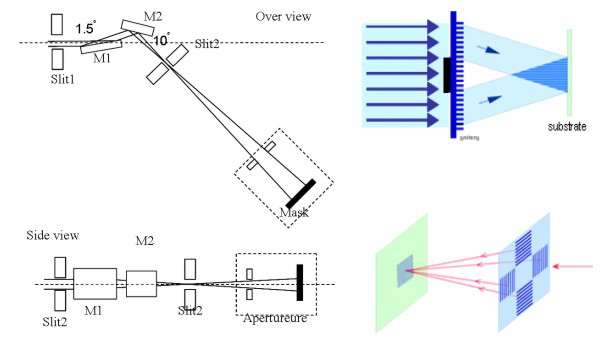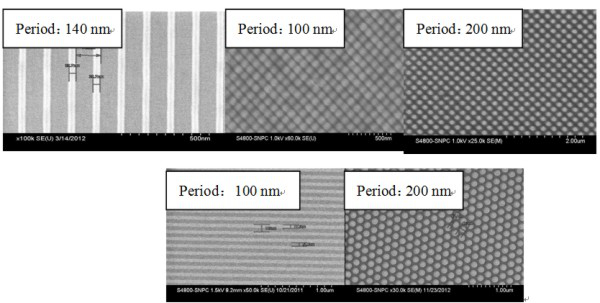BL08U1-B Soft X-ray Interference Lithography (XIL) Beamline
1. Introduction
Soft-X ray interference lithography (XIL) is a newly developed technique for production of periodic nano-structures with resolution below 100 nm. The technique is based on coherent radiation obtained from undulators at synchrotron radiation (85-150 eV). Because of its small wavelength (typical value: 13.4 nm) and practical absence of the proximity effect, high density resolution lines/dots with high density can be afforded. The throughput of this parallel exposing method is much higher than that of the serial electron-beam lithography. Interference schemes based on diffraction (gratings) optics have been constructed at BL08U1-B beamline in SSRF. Both one-dimensional and two-dimensional patterns such as arrays of dots have been achieved. XIL is used in a growing number of applications; examples include fabrication of self-assembly templates, magnetic nano-dot arrays and nano-optical components.
2. Advantage of XIL
• No proximity effect (e-- mean-free-path < 1-3 nm)
• No depth of focus: Mask-to-wafer = 0.1
• Pitch independent aerial image.
• High resolution: theoretical linewidth limit= 3.5 nm;
• Large area: up to 0.4x
• Step and repeat: up to 50x580 mm2
• High throughput: typically 10 s:
• Quality, reproducibility: enabling industrial operation
3. Beamline Layout

4. Techniques
Diffraction grating interference lithography:
two grating interference——periodic lines;
three grating interference——periodic hexagonal dots;
four grating interference——periodic square dots;
Resist:PMMA;HSQ;ZEP520.
5. Representative structures in BL08U1-B

6. Endstations
XIL exposure system including: 100 class clean room, Exposure chamber, Mask & wafer stage, Spin-coater, Microscope, Ellipsometer, UV lithography system and E-beam lithography system.
The main equipments for lithography:Spin coater, UV lithography system and E-beam lithography system.

7. Support LAB
This lab is used for pattern transfer, including: E-beam evaporation & magnetron sputtering system with QCM, ICP etching system, laser cutter, Plasma Asher and Ellipsometer.

8. Beamline Specifications
|
Source |
Elliptically Polarized Undulator |
|
|
85~150 eV |
|
Photon Flux at sample |
1´1015phs/s@300 mA |
|
Beam size at mask |
~4´ |
|
Interference patter period |
50 nm |
|
Sing exposure area |
~ 0.4´ |
9. Applications
Guided self-assembly templates;
Magnetic nanodot arrays;
EUV resist testing----the only testing equiment for EUV resist in China;
10. Contacts
Dr Yang,Shumin
Email:
TEL: 86-21-33932085
Dr Wu,Yanqing
Email:
Tel: 86-21-33933208


 Copyright©2006.12 Shanghai Advanced Research Institute.
Copyright©2006.12 Shanghai Advanced Research Institute.